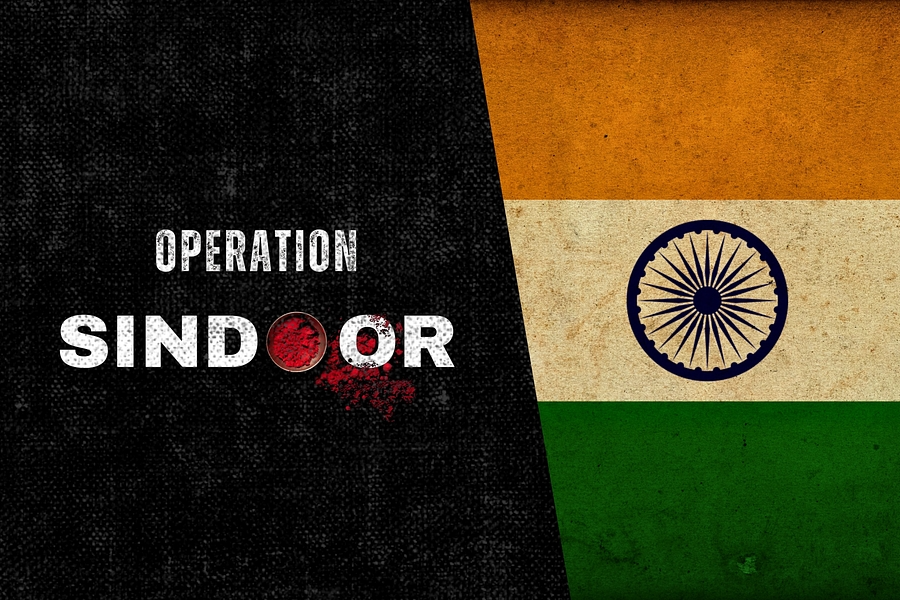The Myth of Meritocracy and Caste-Based Disparities in the Indian IT Sector
Sociology Paper 2: Caste System – Features of Caste System

The Indian IT sector is often celebrated as a global success story—a symbol of innovation, modernity, and meritocracy. Cities like Bengaluru, Hyderabad, and Pune have emerged as global technology hubs, drawing praise for the skills, creativity, and achievements of Indian IT professionals. On the surface, the sector appears to operate as a level-playing field where hard work, technical skills, and problem-solving abilities determine career success, irrespective of one’s social background.
However, beneath this narrative of meritocracy lies a persistent and often invisible reality: caste continues to influence recruitment, career growth, workplace relationships, and leadership opportunities. Despite the sector’s proclaimed emphasis on talent, India’s deep-rooted social hierarchies subtly shape who gets in, who rises, and who thrives in the IT industry. Understanding these dynamics requires a closer look at recruitment practices, workplace structures, and sociological implications.
Caste-Based Disparities in Recruitment
Although IT companies claim to follow meritocratic recruitment, caste influences hiring in multiple ways:
- Educational Disparities: Access to quality education remains unevenly distributed along caste lines. Top engineering institutions and IT-focused campuses have a disproportionate number of upper-caste students. These candidates often benefit from better schooling, access to coaching classes, and family or community guidance for competitive exams. In contrast, Dalit, Adivasi, and other marginalized groups face systemic barriers that reduce access to elite educational resources, which in turn limits their opportunities to enter high-paying IT roles. This demonstrates that merit is often contingent on unequal starting points, challenging the notion of a purely talent-based system.
- Networking and Referrals: Recruitment through referrals, a dominant practice in many IT companies, tends to favor candidates from similar social networks. Upper-caste employees are more likely to refer peers from their own communities, unintentionally reinforcing caste homogeneity.
- Bias in Selection: Even in ostensibly “blind” recruitment processes, hiring managers may unconsciously favor candidates who fit a certain cultural or behavioral mold. Concepts such as “competence” or “cultural fit” are often coded through dominant caste norms, putting marginalized candidates at a disadvantage.
Consequently, recruitment practices, even under the banner of meritocracy, often reproduce existing social inequalities and limit diversity in the workforce.
Workplace Hierarchies and Career Progression
Caste hierarchies do not disappear after recruitment; they continue to shape workplace dynamics and career advancement:
- Segregation and Informal Networks: Social interactions, mentorship opportunities, and team allocations often favor employees from dominant caste groups. Informal networks—lunch groups, after-work social circles, or mentorship ties—provide access to guidance, strategic projects, and career-enhancing opportunities. Marginalized employees frequently lack these connections, limiting their upward mobility.
- Promotion and Recognition: Career progression is often unevenly distributed. Upper-caste employees tend to enjoy greater visibility, receive more significant project assignments, and are groomed for leadership roles. Conversely, marginalized employees may encounter slower career growth, fewer high-impact assignments, and limited access to sponsorship opportunities that are crucial for leadership trajectories.
- Cultural Capital: Workplace norms regarding communication style, professional etiquette, confidence, and assertiveness often align with upper-caste cultural values. Employees who do not conform to these unspoken expectations may be perceived as less competent or leadership-ready, despite equal technical ability. This reinforces structural inequities even in organizations that emphasize merit-based performance evaluations.
Sociological Perspectives
- Structural Functionalism: From this lens, meritocracy in IT appears to maintain efficiency and social stability by rewarding skill and output. Yet, structural functionalism also highlights that these systems often overlook unequal access to opportunities, masking underlying social hierarchies that prevent equitable outcomes.
- Conflict Theory: IT workplaces can be understood as arenas of social competition, where dominant caste groups preserve privilege and maintain control over resources and power. In this context, meritocracy functions as a legitimizing ideology rather than a mechanism for dismantling inequality.
- Intersectionality: Caste intersects with gender, region, and socioeconomic background to shape experiences. For example, Dalit or tribal women in IT may face compounded discrimination, limiting their access to mentorship, leadership roles, and professional networks, further deepening inequalities.
Broader Implications of Caste-Based Disparities in IT
Caste-based inequalities in the IT sector are not just a matter of workplace fairness—they have far-reaching social, economic, and organizational consequences that affect both individuals and society at large
Undermining Social Mobility
The IT sector is often celebrated as a vehicle for upward mobility, particularly for India’s young population. It is perceived as a sector where talent, technical skills, and hard work can help individuals escape socio-economic constraints and achieve financial stability.
However, caste-based disparities challenge this narrative. Marginalized groups, including Dalits, Adivasis, and other backward communities, often face systemic barriers at multiple stages:
- Limited access to quality education and training restricts entry into elite IT colleges and competitive recruitment pools.
- Lack of mentorship, sponsorship, and inclusion in informal workplace networks limits career growth after joining the industry.
- Stereotypes about “cultural fit” and perceived leadership potential further slow promotion and recognition.
As a result, IT does not always serve as the egalitarian ladder it is meant to be. Instead, social hierarchies are reproduced, and marginalized employees may remain trapped in lower-level positions, reinforcing historical inequalities.
Reinforcing Social Stereotypes
Underrepresentation of Dalits, Adivasis, and OBCs in IT leadership and specialized roles perpetuates a social perception that the sector is dominated by upper-caste employees. This has several consequences:
- Normalization of Inequality: When the workforce composition mirrors historical caste hierarchies, it normalizes the idea that technical expertise and leadership are upper-caste domains.
- Discouragement of Aspiring Talent: Young aspirants from marginalized communities may feel that IT is “not for them,” reducing their motivation to pursue careers in technology.
- Workplace Culture: Homogeneity in leadership can reinforce norms, communication styles, and informal networks that align with upper-caste culture, making it harder for marginalized employees to integrate or advance.
Over time, these stereotypes become self-reinforcing, influencing recruitment pipelines, professional aspirations, and societal perceptions of merit.
Policy and Ethical Concerns
Caste disparities present significant challenges for corporate governance, ethics, and social responsibility:
- Balancing Meritocracy and Affirmative Action: Companies often struggle to reconcile meritocratic ideals with legal and social obligations to promote diversity and inclusion. Without proactive policies, meritocracy can inadvertently favor historically privileged groups.
- Employee Morale and Productivity: Perceptions of bias or unequal treatment can lead to lower morale, disengagement, and higher attrition among marginalized employees. This not only affects individual well-being but also organizational performance and innovation.
- Innovation and Decision-Making: Lack of diversity limits the variety of perspectives in problem-solving, product design, and strategic decisions, undermining creativity and global competitiveness.
- Ethical and Social Responsibility: In an era of heightened corporate accountability, failing to address caste inequities can damage the company’s reputation and social legitimacy. Firms are increasingly expected to go beyond compliance and actively foster equity in recruitment, retention, and leadership pipelines.
Strategies for Change: Building an Inclusive IT Sector
Addressing caste-based disparities in the Indian IT industry requires comprehensive, multi-level interventions that address inequities from entry-level recruitment to leadership development. A holistic approach can ensure that marginalized communities gain fair access to opportunities, recognition, and career growth.
Education and Skill Development form the foundation of an inclusive IT sector. Expanding access to engineering colleges, vocational training, and coding bootcamps for marginalized groups can create more diverse talent pipelines. Scholarships, stipends, and financial aid reduce economic barriers faced by Dalits, Adivasis, and OBC students, while mentorship programs connect students with industry professionals who provide guidance, career advice, and networking opportunities. Initiatives such as Infosys’ “Bridge Programs” and TCS’ scholarship schemes for disadvantaged students exemplify how structured support can enhance skill development and bridge entry-level gaps.
Transparent Recruitment practices are crucial for reducing bias in hiring. Structured interviews and standardized assessments help minimize subjective evaluations and prevent favoritism based on social background. Blind hiring practices, where personal identifiers like name, gender, caste, or region are removed during initial screenings, ensure that candidates are assessed purely on merit. Equipping HR teams and hiring managers with anti-bias training further mitigates unconscious prejudices. Multinational IT firms like Accenture and Microsoft have implemented such practices, including blind resume screening and competency-based assessments, to promote fairness and diversity.
Mentorship and Sponsorship are essential for ensuring that underrepresented employees can navigate organizational hierarchies and advance their careers. Mentorship programs provide guidance on project selection, performance improvement, and skill enhancement, while sponsorship initiatives allow senior employees to advocate for high-potential marginalized staff, helping them access leadership opportunities. Additionally, encouraging participation in professional groups, internal forums, and cross-functional projects increases visibility and integration. Wipro’s “Diversity and Inclusion Mentorship Program” is an example of a targeted initiative that helps underrepresented employees access leadership training and career growth opportunities.
Diversity Policies create structural accountability and measurable outcomes. Organizations can set internal targets or quotas for the representation of marginalized groups in recruitment, promotions, and leadership roles to ensure systemic inclusion. Regular monitoring and reporting of caste representation across organizational levels help track progress and identify gaps. Inclusive HR practices, including fair appraisal and promotion systems, and strict enforcement of anti-discrimination policies, reinforce a culture of equity. Companies like Tech Mahindra and Infosys publicly report diversity statistics and maintain internal accountability mechanisms to monitor representation and inclusion.
Finally, Cultural Sensitization fosters an inclusive workplace environment where differences are respected and valued. Diversity workshops and awareness campaigns educate employees about caste sensitivity, inclusion, and unconscious bias. Policies promoting collaborative work, respectful communication, and equitable team assignments reduce social exclusion. Celebrating cultural and social diversity through events, storytelling, and employee-led forums strengthens belonging and encourages appreciation of different perspectives. Organizations such as IBM India and SAP India actively conduct mandatory diversity workshops and maintain employee-led cultural groups to promote awareness and inclusivity.
In combination, these strategies—education, recruitment reforms, mentorship, diversity policies, and cultural sensitization—create a comprehensive framework for addressing caste-based inequities in the IT sector. When implemented effectively, they not only enhance fairness and social justice but also improve employee morale, innovation, and organizational effectiveness, ensuring that India’s digital economy benefits from the full range of its talent.
Conclusion
Despite its global reputation as a meritocratic engine, the Indian IT sector continues to reflect caste-based inequalities. Meritocracy without equity remains largely aspirational.
Addressing these disparities is not only about fairness—it is a moral imperative, an economic necessity, and a crucial step toward social justice. Through inclusive policies, equitable education, mentorship programs, and cultural sensitization, the IT sector can move closer to genuine meritocracy, where talent and innovation flourish independent of caste. Only then can India’s digital economy truly reflect its ideals of equality, opportunity, and social justice.


Kannada Literature Optional Syllabus
Home / ಐಚ್ಚಿಕ ಕನ್ನಡ ಸಾಹಿತ್ಯದ ಪಠ್ಯಕ್ರಮ ಐಚ್ಚಿಕ ಕನ್ನಡ ಸಾಹಿತ್ಯ ಪತ್ರಿಕೆ – 1 ವಿಭಾಗ – ಎ ಅ) ಕನ್ನಡ ಭಾಷೆಯ ಚರಿತ್ರೆ ಭಾಷೆ
UPSC Current Affairs – October 6th
October 06th Current Affairs Home / Table of Contents 36-hour curfew imposed in parts of Odisha’s Cuttack over communal tensions
Religious Minorities in India and the Challenge of Communal Harmony: A Sociological Reflection on the Cuttack Violence
Home / Religious Minorities in India and the Challenge of Communal Harmony: A Sociological Reflection on the Cuttack Violence Sociology
UPSC Current Affairs – October 4th
October 04th Current Affairs Home / Table of Contents Isabgol Processors threaten to halt purchases from October 6th over GST
Sologamy and Contemporary Trends in Marriage: A Sociological Perspective
Home / Sologamy and Contemporary Trends in Marriage: A Sociological Perspective Sociology Paper 1: Systems of Kinship – Contemporary trends
UPSC Current Affairs – October 3rd
October 03rd Current Affairs Home / Table of Contents NASA IMAP to show how solar particles are energised and shield
Understanding Indian Festivals through Durkheim: Religion, Rituals, and Collective Conscience
Home / Understanding Indian Festivals through Durkheim: Religion, Rituals, and Collective Conscience Sociology Paper 1: Émile Durkheim – Religion and
UPSC Current Affairs – September 30th
September 30th Current Affairs Home / Table of Contents Ladakh groups reject talks with government, Ministry says open to dialogue
Caste Census in India: A Sociological Perspective
Home / Caste Census in India: A Sociological Perspective Sociology Paper 2: Caste System – Features of Caste system. The
Constitutional Morality: Upholding India’s Democratic Ethos
Home / Constitutional Morality: Upholding India’s Democratic Ethos Sociology Paper 2: Visions of Social Change in India – Constitution, law,




